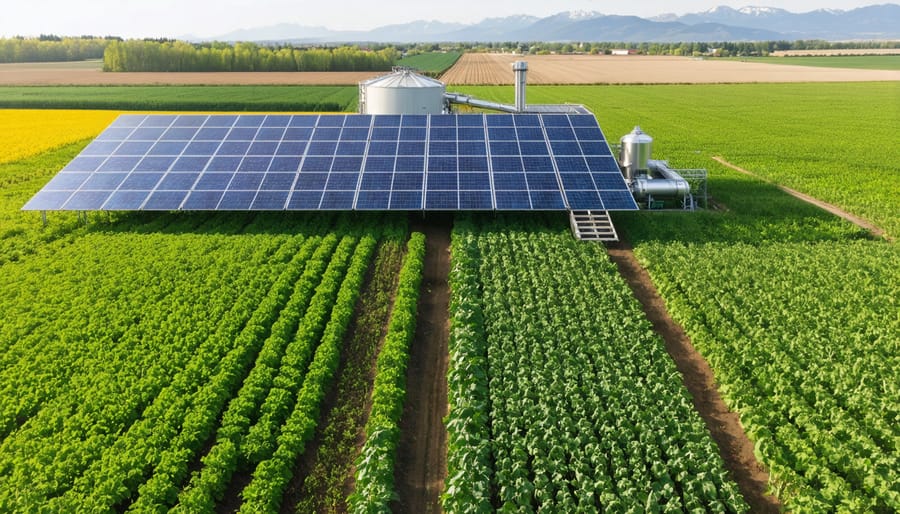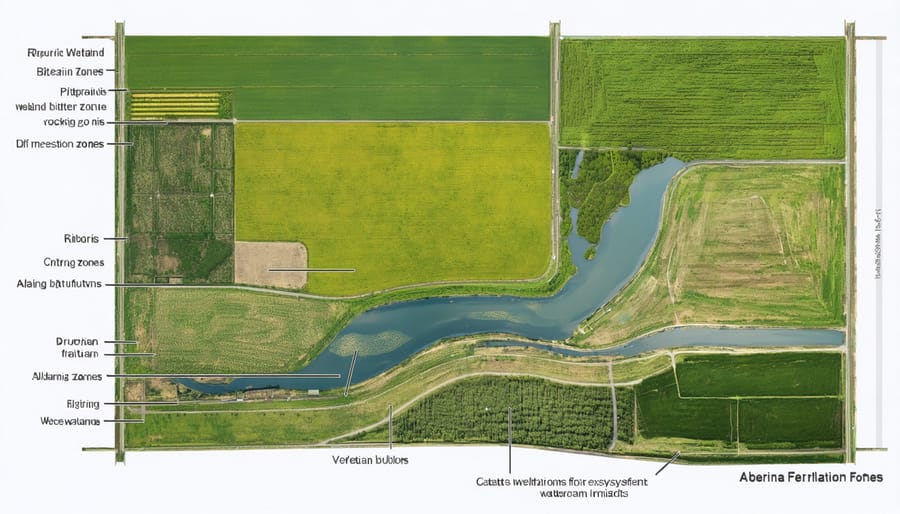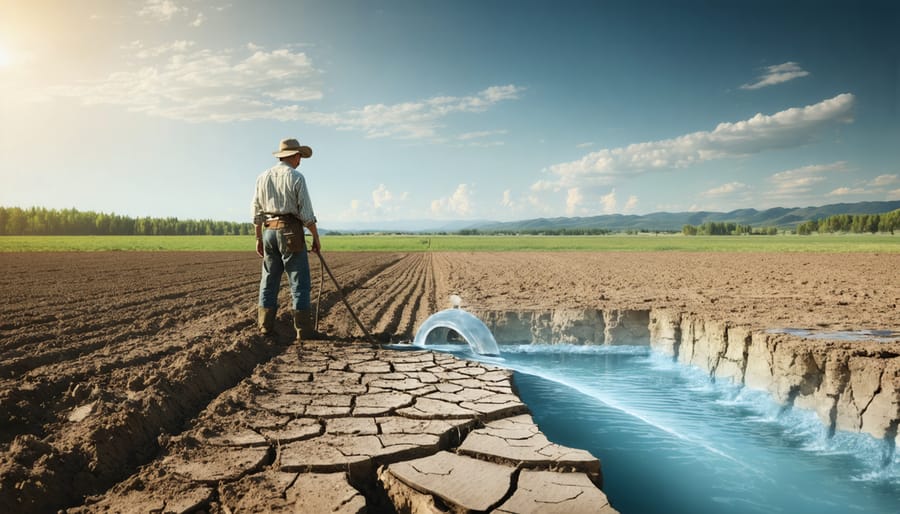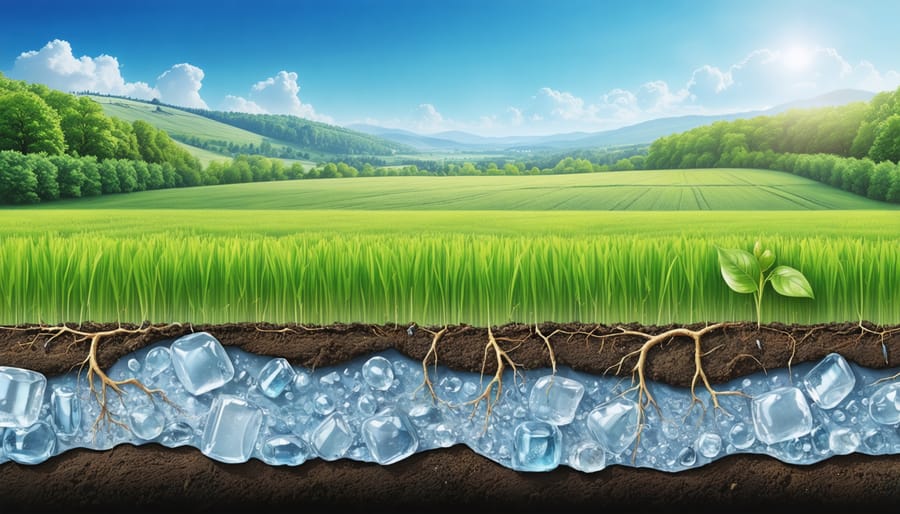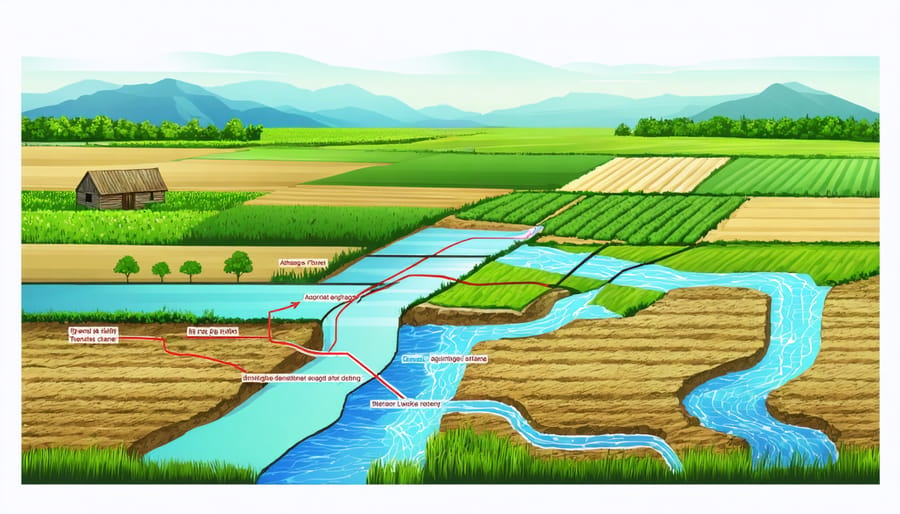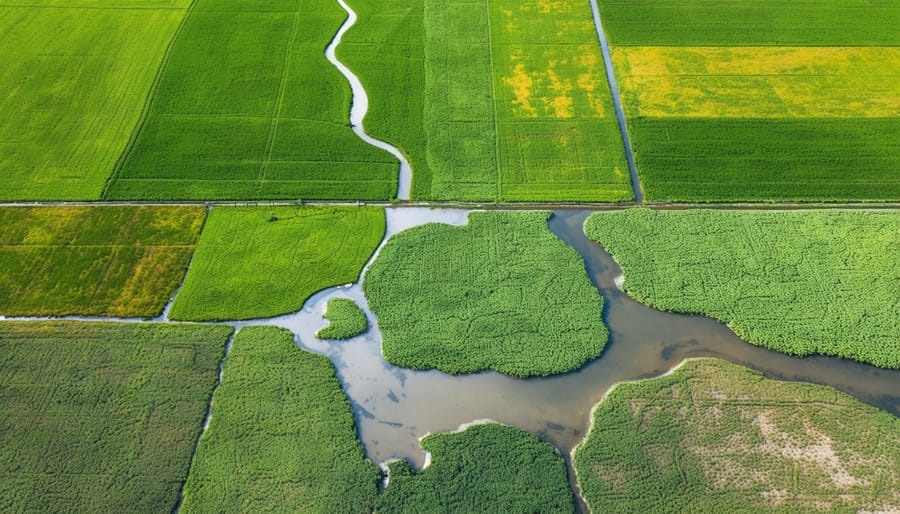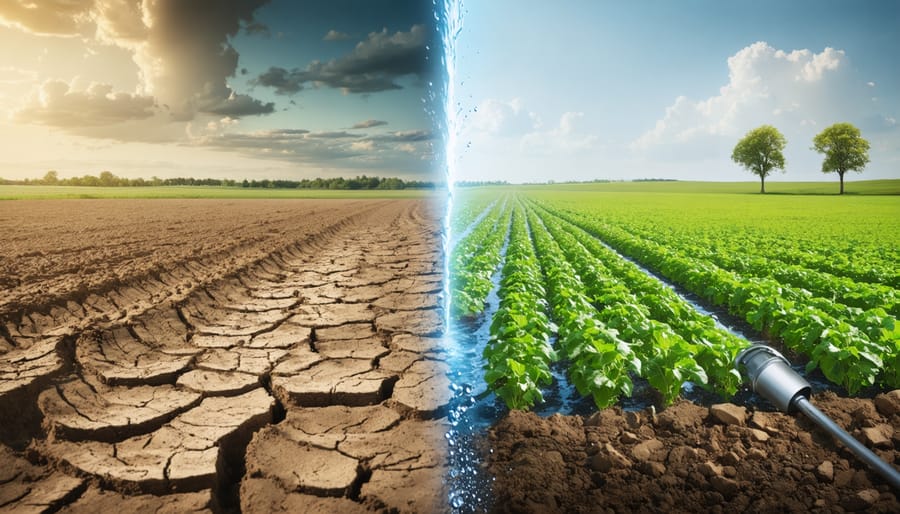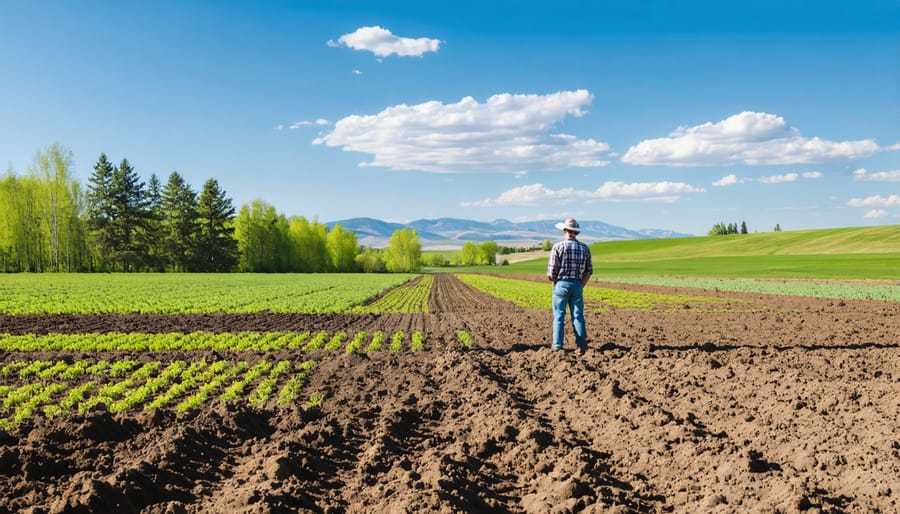As Canadian farmers grapple with intensifying water scarcity challenges, desalination technologies emerge as both a promising solution and an environmental concern. While these systems can transform brackish groundwater into viable irrigation sources, their implementation comes with significant ecological implications that demand careful consideration from our agricultural community. Recent studies across Alberta’s irrigation districts reveal that desalination processes consume substantial energy, potentially generating up to 2.5 tonnes of CO2 emissions per megaliter of water treated. The concentrated brine discharge from these operations can alter soil chemistry and impact local ecosystems, particularly in sensitive prairie watersheds. However, innovative approaches combining solar-powered desalination units with brine management strategies have shown promising results, reducing environmental impact while maintaining water quality suitable for crop irrigation. As we explore these technologies, understanding their environmental footprint becomes crucial for making informed decisions about water management on Canadian farms.
Current Desalination Technologies in Agricultural Use
Reverse Osmosis Systems
Reverse osmosis (RO) systems have become increasingly popular among Alberta farmers seeking sustainable solutions for water treatment. These systems work by pushing water through a semi-permeable membrane under pressure, effectively removing salt and other contaminants. For Canadian agriculture, RO technology offers a practical approach to managing water quality while minimizing environmental impact.
Local farmer Mike Thompson from Lethbridge shares his experience: “Since installing our RO system three years ago, we’ve seen a significant improvement in crop yields, particularly in our greenhouse operations. The system pays for itself through reduced water waste and better produce quality.”
The environmental footprint of RO systems varies depending on scale and implementation. Modern systems typically operate at 75-80% efficiency, meaning they recover most of the water processed. However, they do require significant energy input, approximately 3-10 kWh per cubic metre of treated water. To offset this, many Alberta farmers have integrated solar panels to power their RO systems, creating a more sustainable operation.
The brine discharge from RO systems presents a management challenge, but innovative solutions are emerging. Some operations are now using the concentrate for dust suppression on farm roads or diluting it for controlled soil application where appropriate. The Prairie Farm Rehabilitation Administration recommends implementing proper disposal protocols and regular system maintenance to maximize efficiency and minimize environmental impact.
When properly maintained, RO systems represent a valuable tool for Canadian agriculture, balancing water quality needs with environmental responsibility.
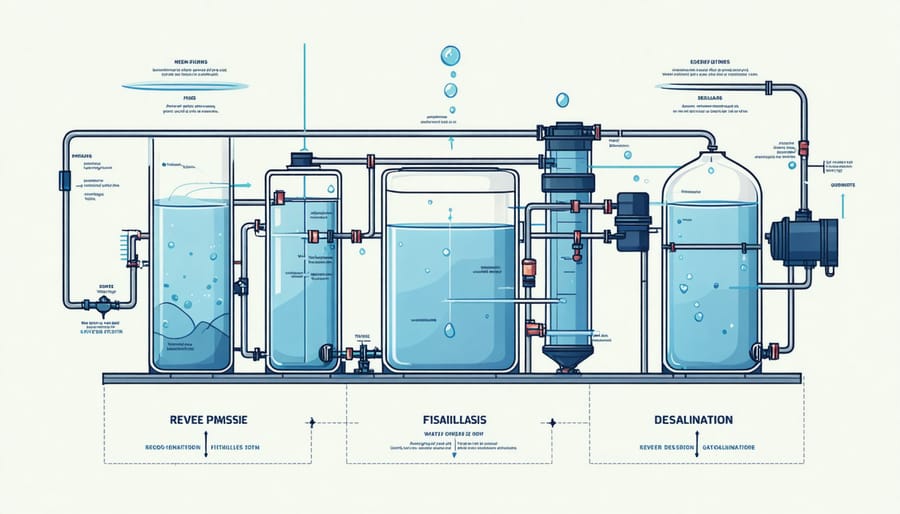
Thermal Desalination Methods
Thermal desalination methods have been a cornerstone of water treatment technology, particularly relevant for our agricultural communities dealing with saline water sources. These processes essentially mimic nature’s water cycle by heating saltwater until it evaporates, leaving the salt behind, and then collecting the pure water vapor through condensation.
The most common thermal method is Multi-Stage Flash (MSF) distillation, which uses a series of chambers with decreasing pressure levels. As water moves through these chambers, it repeatedly boils and condenses, producing fresh water at each stage. While effective, this process requires significant energy input, typically using about 23-27 kilowatt-hours per cubic metre of water produced.
Multiple Effect Distillation (MED) offers a more energy-efficient alternative, using about 15-18 kilowatt-hours per cubic metre. This system works by reusing the heat from steam multiple times through successive evaporation stages. For our Alberta farmers, this could mean lower operational costs when treating brackish groundwater.
Here in Canada, we’ve seen successful implementations of thermal desalination in greenhouse operations, where the heat generated can serve double duty – both for desalination and maintaining optimal growing temperatures during our cold winters. However, it’s worth noting that these systems work best when integrated with renewable energy sources like solar thermal collectors or geothermal systems to offset their energy requirements and environmental impact.
Environmental Challenges and Solutions
Energy Consumption and Carbon Footprint
The energy demands of desalination facilities represent one of the most significant environmental challenges facing our agricultural water management systems. Traditional desalination methods consume between 3-7 kilowatt-hours (kWh) of electricity per cubic metre of freshwater produced, contributing substantially to greenhouse gas emissions when powered by conventional energy sources.
For Alberta farmers looking to implement desalination solutions, solar-powered desalination systems offer a promising path forward. These systems can reduce operational energy costs by up to 60% while minimizing environmental impact. Local case studies show that farms utilizing solar-powered desalination typically recover their initial investment within 5-7 years through reduced energy costs and increased crop yields.
Energy efficiency improvements and reducing water carbon footprint go hand in hand. Many Alberta farmers are now combining renewable energy solutions with energy recovery devices (ERDs) in their desalination systems. ERDs can recapture up to 60% of the energy used in the desalination process, significantly lowering both operational costs and environmental impact.
Looking ahead, emerging technologies like wind-solar hybrid systems and advanced membrane materials show promise for further reducing energy consumption. These innovations, coupled with smart monitoring systems, are helping Canadian farmers optimize their desalination operations while maintaining their commitment to environmental stewardship. The key is finding the right balance between water security needs and sustainable energy usage, a goal that’s increasingly achievable with modern technology.
Brine Management Strategies
In Alberta’s agricultural sector, managing brine discharge from desalination systems requires thoughtful planning and innovative solutions. Our local farmers have developed effective strategies that protect both soil health and water resources while maximizing operational efficiency.
The most successful approach involves implementing a multi-stage brine management system. First, brine concentration techniques reduce waste volume through evaporation ponds or mechanical evaporators, which are particularly effective during our dry summer months. These systems can decrease brine volume by up to 75%, making disposal more manageable and cost-effective.
Progressive farmers in Southern Alberta have found success with deep-well injection, where brine is carefully deposited into isolated geological formations far below groundwater levels. This method, while requiring initial investment, provides a long-term solution that meets environmental regulations and protects surface ecosystems.
Another promising strategy gaining traction is beneficial use programs. Some operations are partnering with local industries to repurpose brine for dust suppression on unpaved roads or as a de-icing agent during winter months. These partnerships not only reduce disposal costs but also create valuable community connections.
Zero-liquid discharge (ZLD) systems represent the gold standard in brine management. While initially more expensive, these systems recover nearly all water and produce dry salt residue that can be landfilled or potentially marketed. Several farms near Lethbridge have implemented modified ZLD systems, reporting significant improvements in their environmental footprint.
For smaller operations, constructed wetlands offer a natural and cost-effective solution. These systems use salt-tolerant plants to filter and process brine while creating valuable wildlife habitat. Local experience shows these wetlands can handle moderate brine volumes while enhancing biodiversity on the farm.
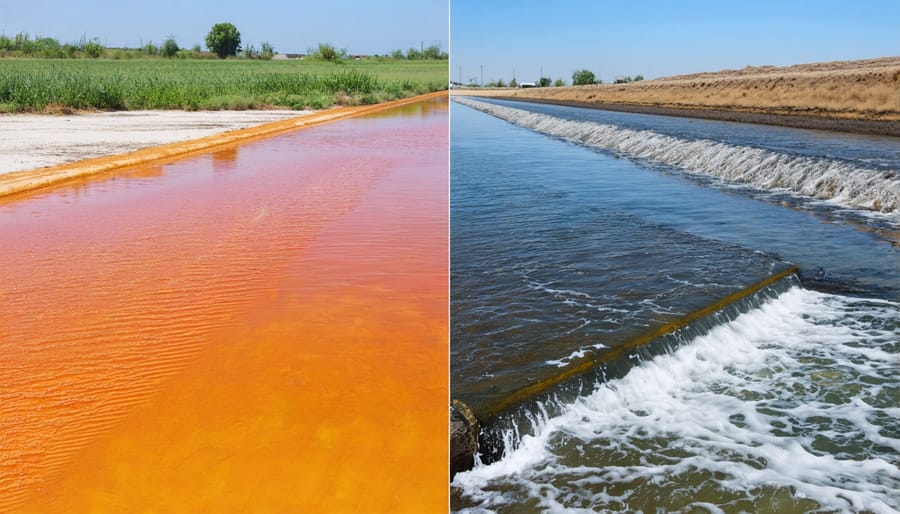
Marine Ecosystem Protection
When desalination plants draw in seawater, they can significantly impact local marine ecosystems, particularly affecting our coastal waters here in Canada. The intake systems can inadvertently pull in fish, plankton, and other marine organisms, a process known as entrainment. Larger marine life can become trapped against intake screens, leading to injury or death through impingement.
In Alberta, while we’re not directly affected by coastal concerns, our agricultural community understands the importance of protecting water ecosystems, as we’ve learned from managing our own irrigation systems. Drawing from this experience, modern desalination facilities are implementing several protective measures that reflect our commitment to environmental stewardship.
Leading facilities now use velocity caps and fine-mesh screens to reduce marine life casualties. Some plants have adopted subsurface intakes, which act like natural sand filters, significantly reducing the impact on marine organisms. These systems work similarly to the controlled water intake systems used in some of our advanced irrigation projects in Southern Alberta.
The concentrated brine discharge from desalination plants can also affect marine habitats. To address this, facilities are implementing multi-port diffusers that better distribute the brine, minimizing its impact on the seafloor. Some innovative plants are exploring ways to dilute the brine before release or even repurpose it for other industrial uses, much like how our agricultural sector has developed water recycling systems.
Regular monitoring of marine populations and water quality helps ensure these protection measures remain effective. Many facilities partner with local marine research institutions to study long-term impacts and improve their conservation strategies. This collaborative approach mirrors the successful partnerships between Alberta’s agricultural research stations and local farmers in developing sustainable water management practices.
Through careful planning and innovative technology, we can balance the need for freshwater production while protecting our valuable marine ecosystems, ensuring a sustainable future for both coastal and inland communities.
Sustainable Implementation for Alberta Farms
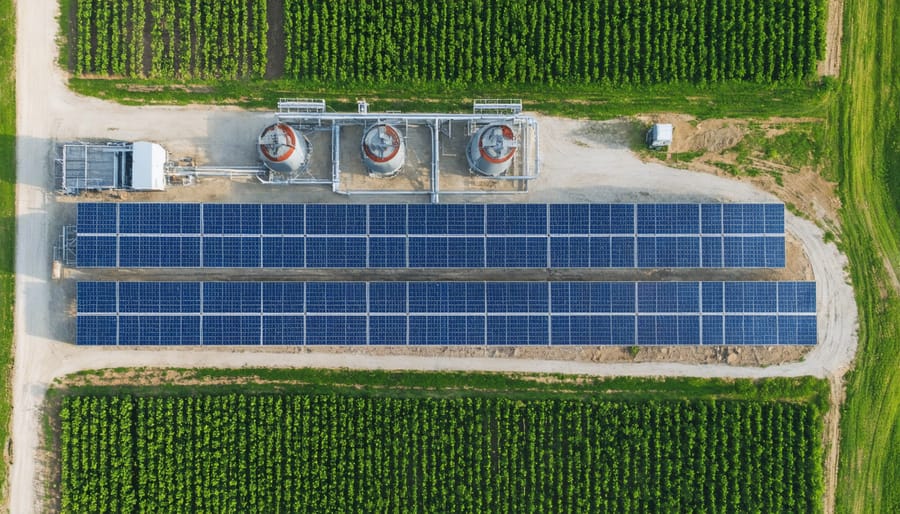
Case Study: Success in Southern Alberta
In the heart of Southern Alberta, the Clearwater County Agricultural Services implemented a groundbreaking desalination project in 2019 that’s revolutionizing how we approach water treatment in agriculture. Working with local farmers, the project successfully treats brackish groundwater, providing clean irrigation water while minimizing environmental impact.
Mary Thompson, a third-generation farmer in the region, participated in the pilot program. “We were skeptical at first,” she shares, “but the results have been remarkable. Our soil quality has improved, and we’ve reduced our reliance on distant water sources.”
The project utilizes solar-powered reverse osmosis systems, cutting energy costs by 60% compared to traditional methods. The brine discharge is managed through a innovative evaporation pond system that incorporates native salt-tolerant plants, creating new wildlife habitats while managing waste responsibly.
Key achievements include:
– 40% reduction in groundwater extraction from freshwater aquifers
– Creation of 2 hectares of new wetland habitat
– 30% increase in crop yields for participating farms
– Zero chemical discharge into local waterways
The success has inspired neighbouring counties to develop similar programs. “It’s proof that desalination can be both environmentally responsible and economically viable,” notes Dr. James Robertson, lead environmental consultant for the project. The initiative now serves as a model for sustainable water management across Western Canada’s agricultural regions.
Best Practices and Resources
To minimize the environmental impact of desalination practices, farmers can implement several proven strategies. Start with regular soil salinity testing to monitor conditions and adjust management practices accordingly. Consider installing efficient drainage systems and implementing crop rotation patterns that include salt-tolerant varieties.
Local agricultural extension offices across Alberta offer valuable resources and expert guidance on sustainable water management. The Alberta Agriculture and Irrigation Ministry provides free workshops and consultation services to help farmers develop customized desalination management plans.
Join regional farmer networks and study groups to share experiences and learn from peers who have successfully managed similar challenges. Many successful Alberta farmers have found that combining traditional knowledge with modern monitoring technology yields the best results.
Take advantage of available funding through the Canadian Agricultural Partnership (CAP) program, which offers financial support for implementing environmental protection measures. Consider working with certified agrologists who can provide specialized advice on soil and water management specific to your region.
Remember to document your management practices and maintain detailed records of water quality measurements. This data will help you track progress and make informed decisions about future improvements to your desalination management strategy.
For additional support, connect with your local conservation authority or agricultural society. These organizations often provide valuable resources, including soil testing equipment loans and technical expertise.
As we’ve explored throughout this article, desalination presents both challenges and opportunities for Canadian agriculture. While the environmental impacts are significant, including energy consumption and brine disposal concerns, innovative technologies and sustainable practices are emerging to address these challenges. Alberta farmers are increasingly finding ways to integrate smaller-scale desalination systems with renewable energy sources, demonstrating that environmental stewardship and agricultural productivity can go hand in hand.
Looking ahead, the future of desalination in Canadian agriculture appears promising. Research institutions across Alberta are developing more energy-efficient technologies, and community-based initiatives are showing how collaborative approaches can make desalination more sustainable and economically viable for farming operations of all sizes.
For our agricultural community, the key takeaway is that successful implementation of desalination requires a balanced approach. By carefully considering environmental impacts, adopting best practices for brine management, and investing in energy-efficient systems, we can harness the benefits of desalination while protecting our precious ecosystems.
As we continue to face climate challenges and water scarcity issues, remember that you’re not alone in this journey. Local agricultural extension services and farming cooperatives are excellent resources for guidance on implementing sustainable desalination solutions. Together, we can work towards a future where clean water availability and environmental protection go hand in hand, ensuring the prosperity of Canadian agriculture for generations to come.

